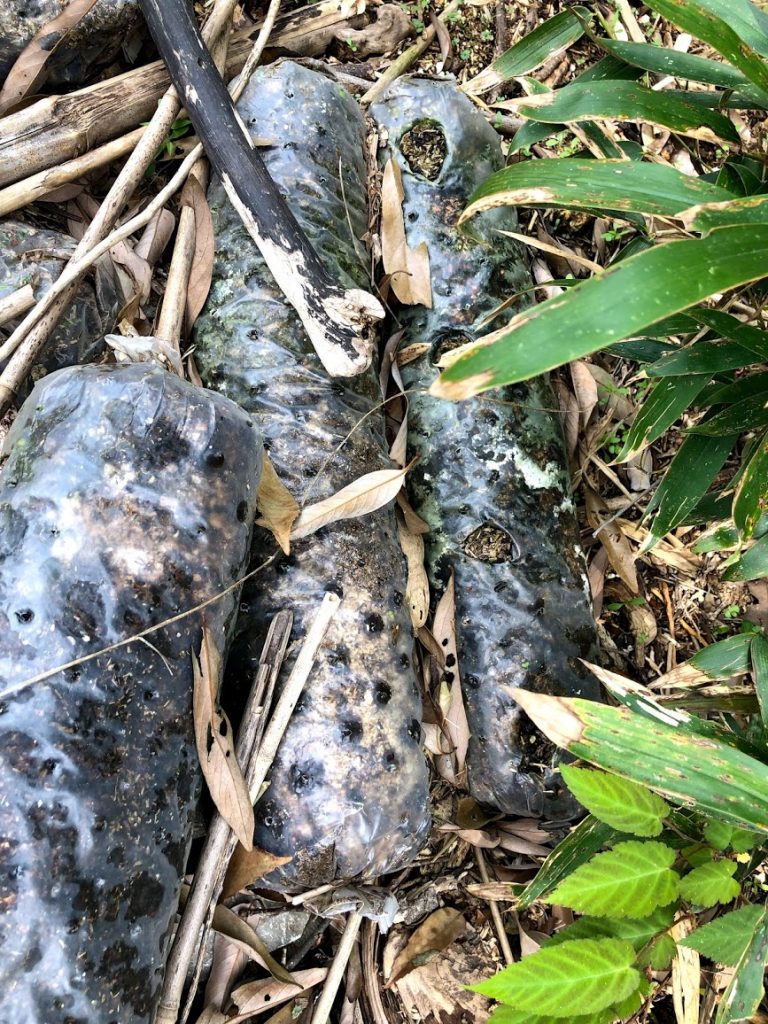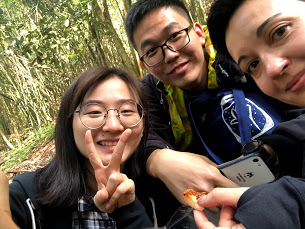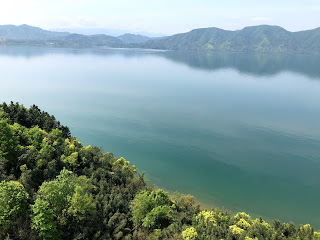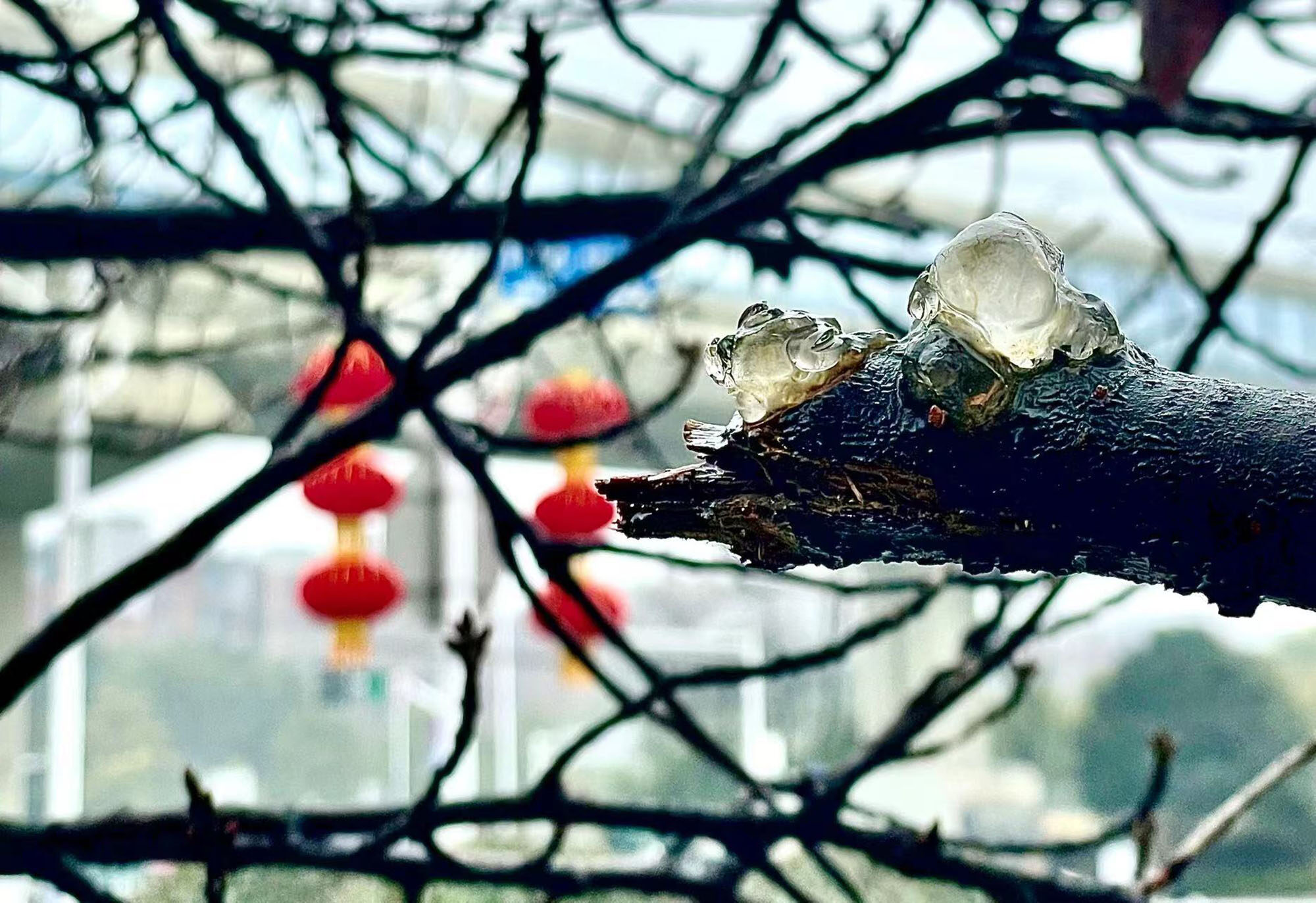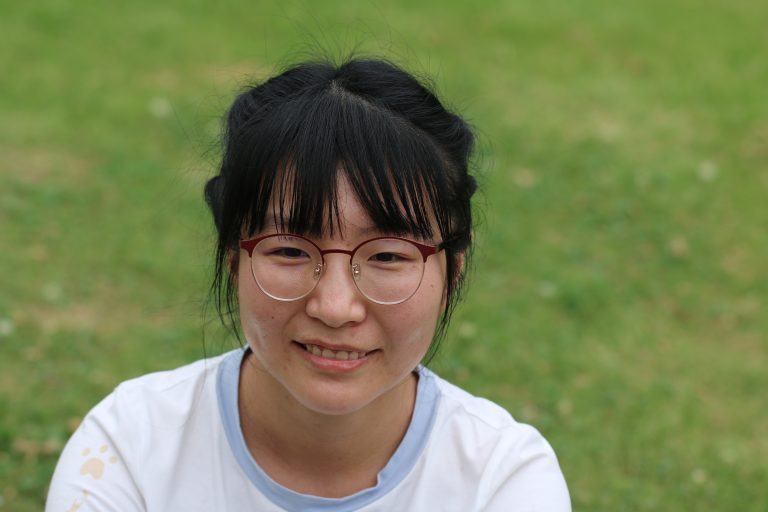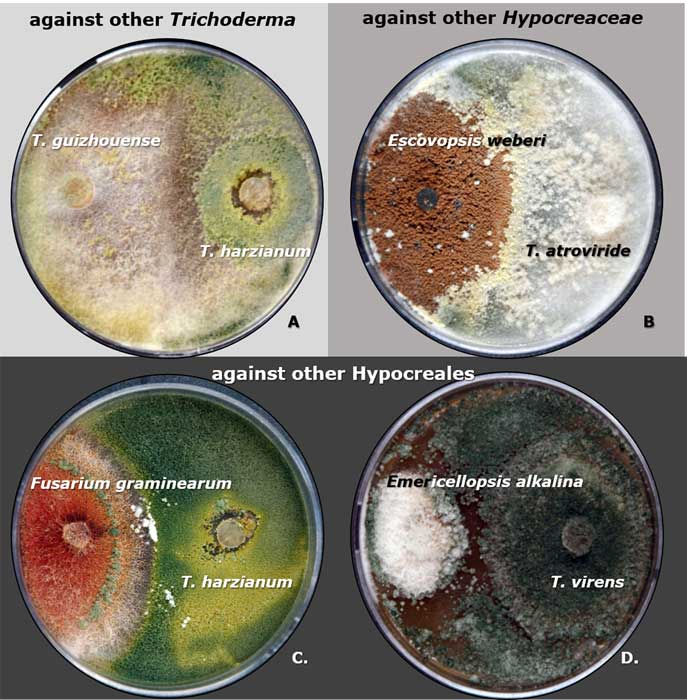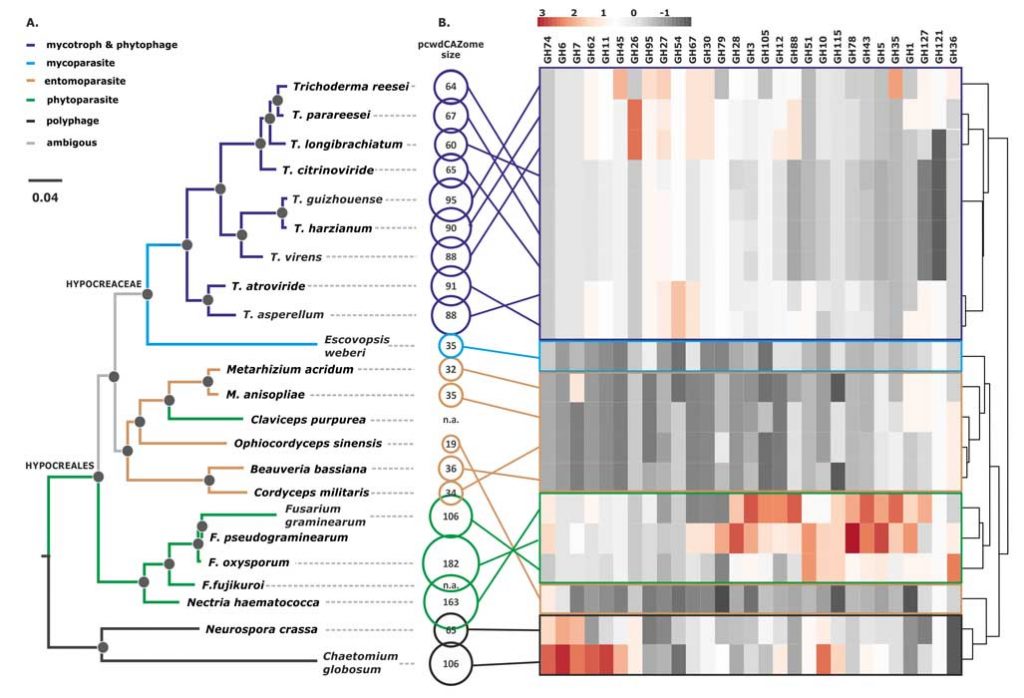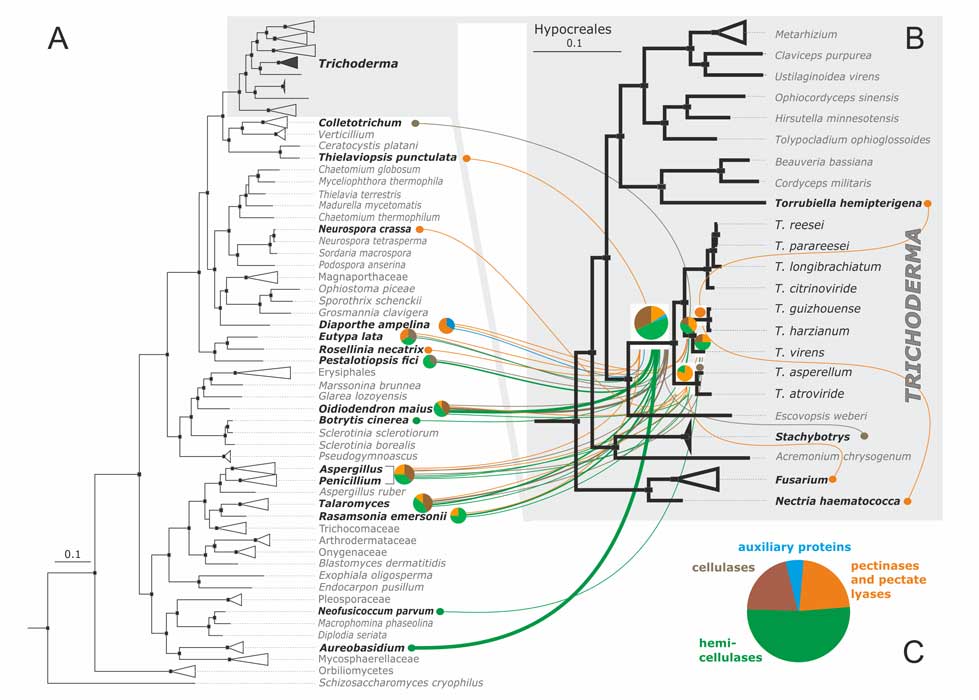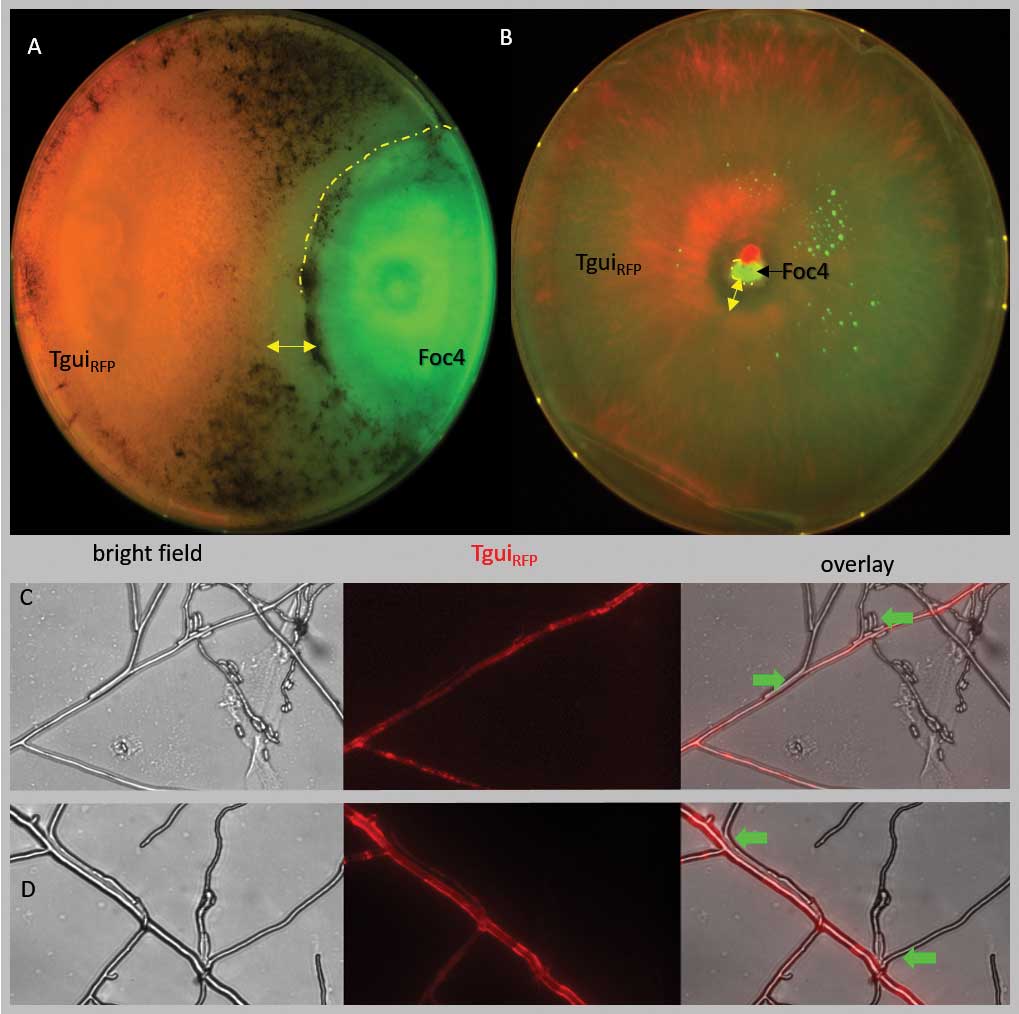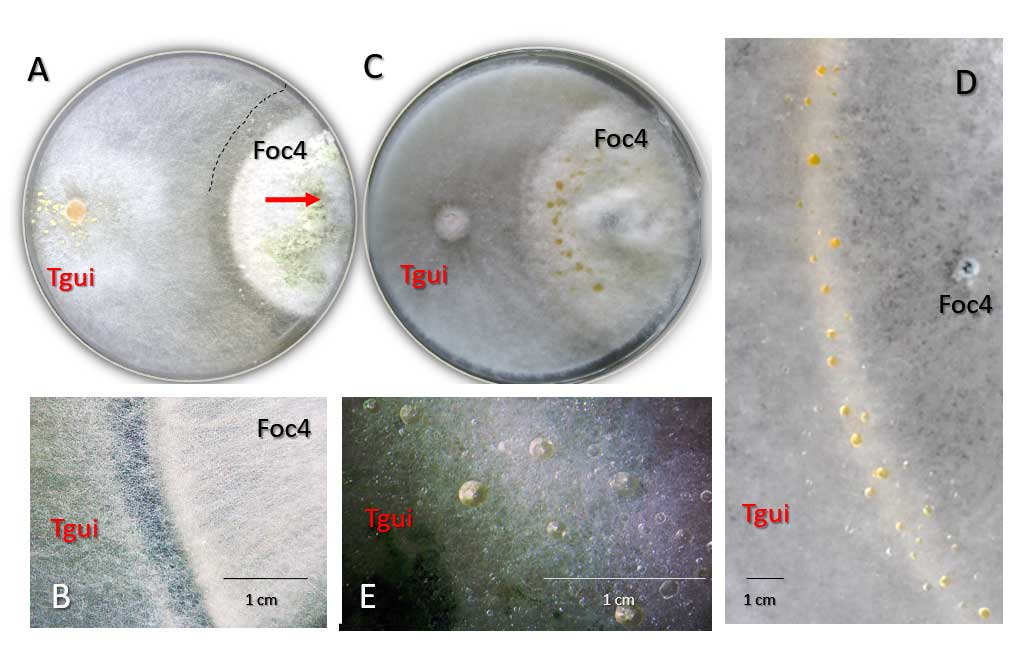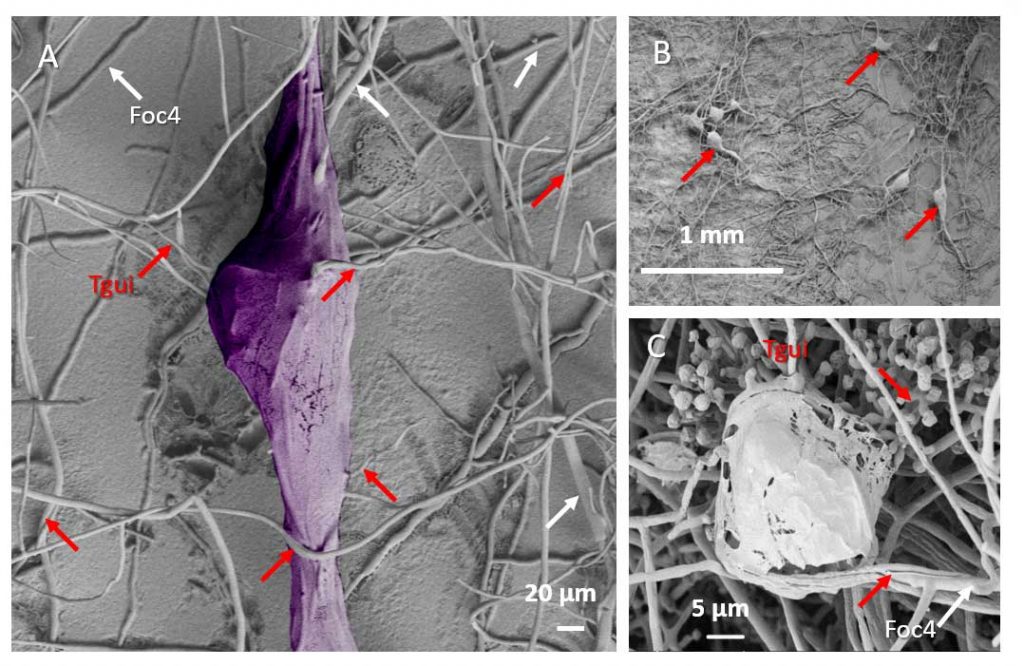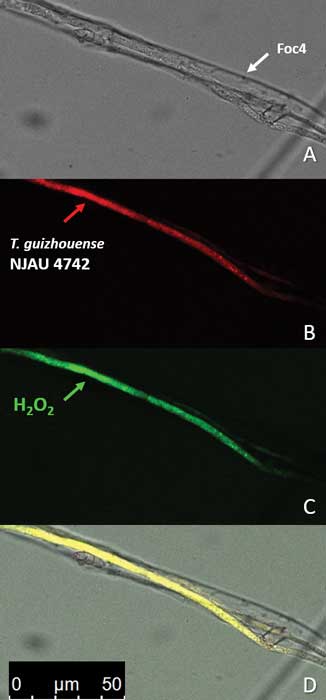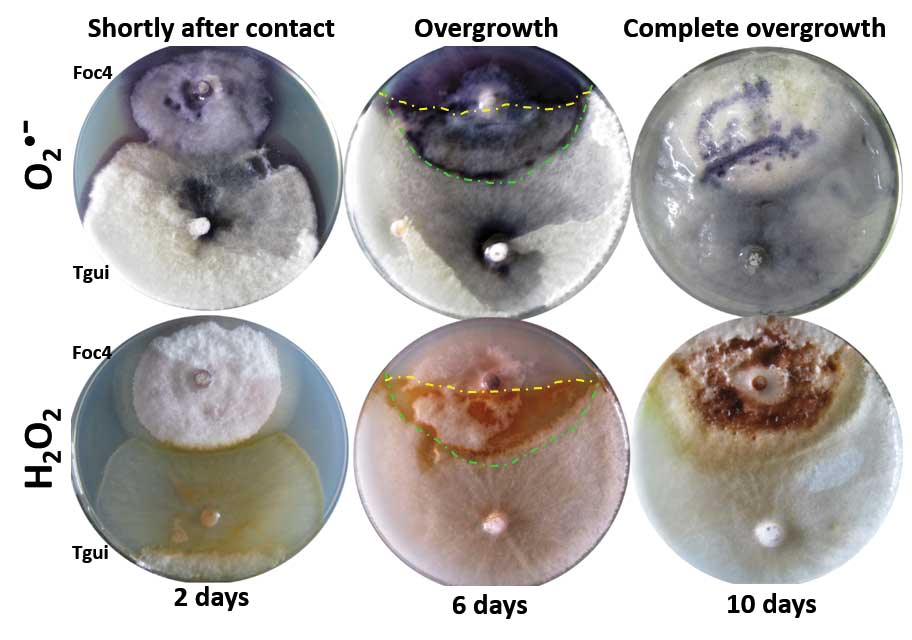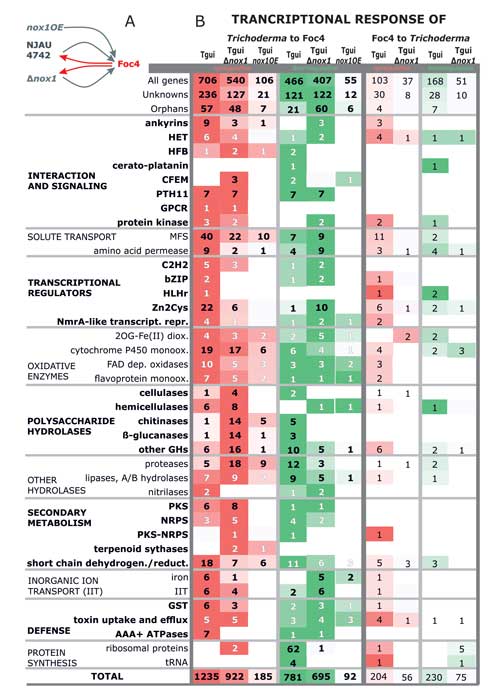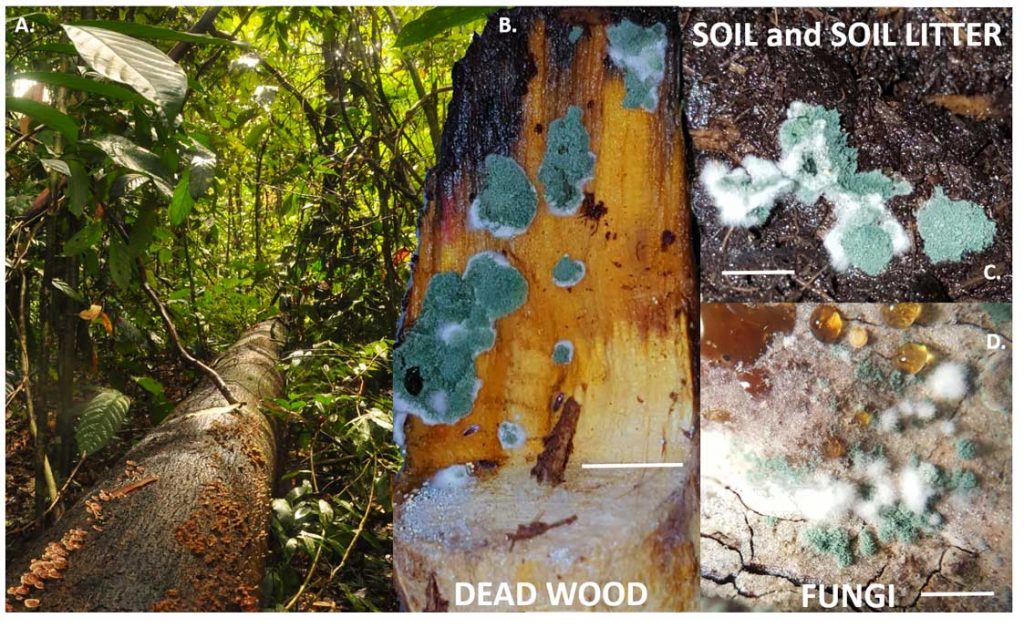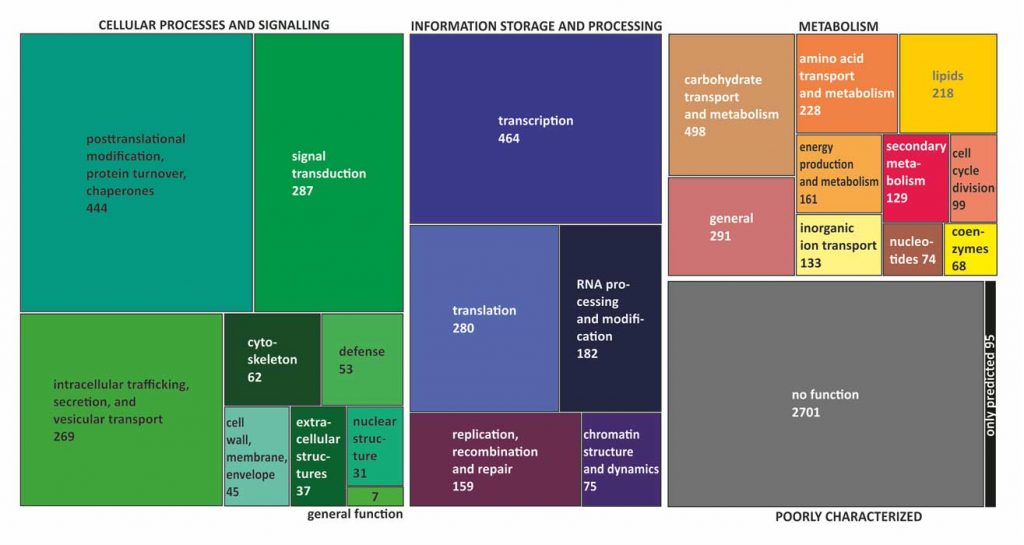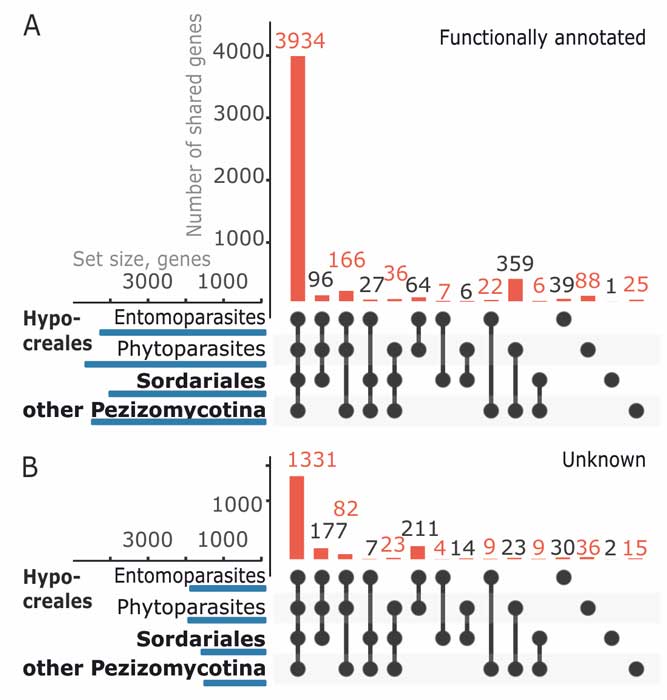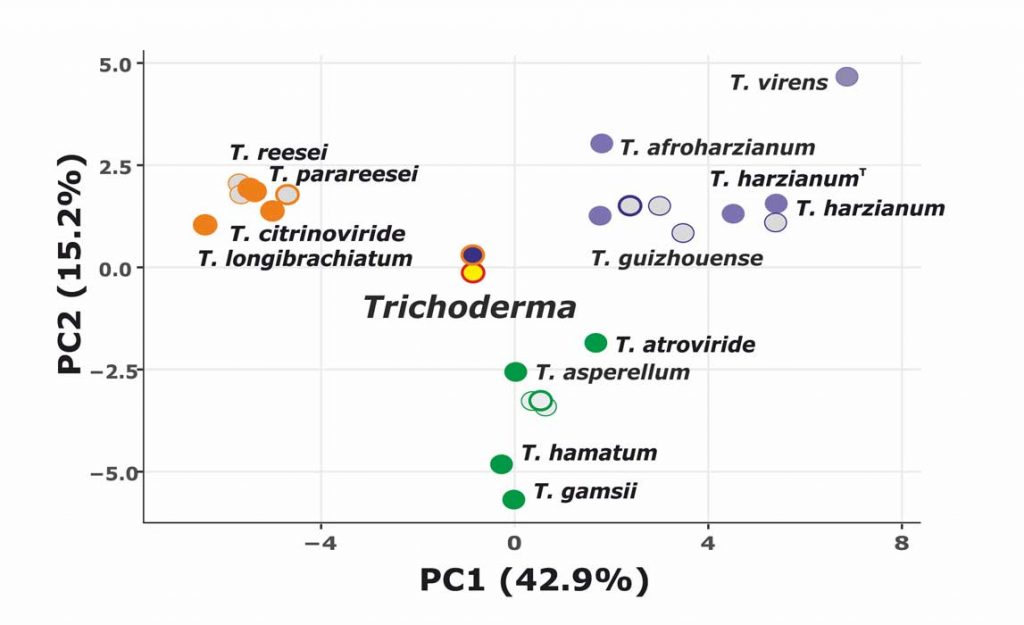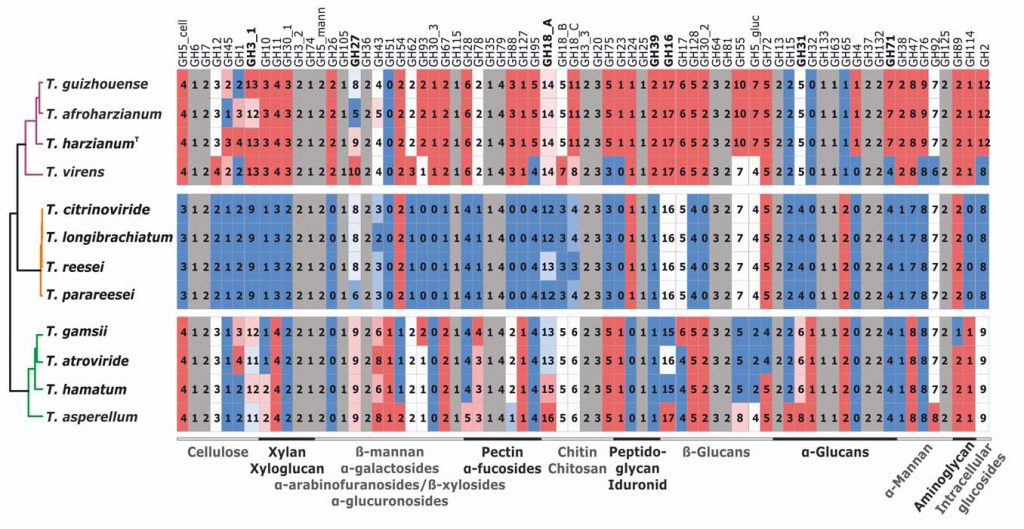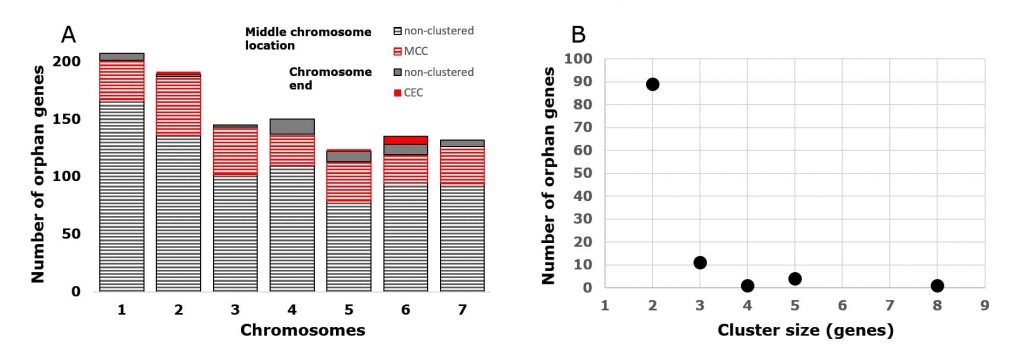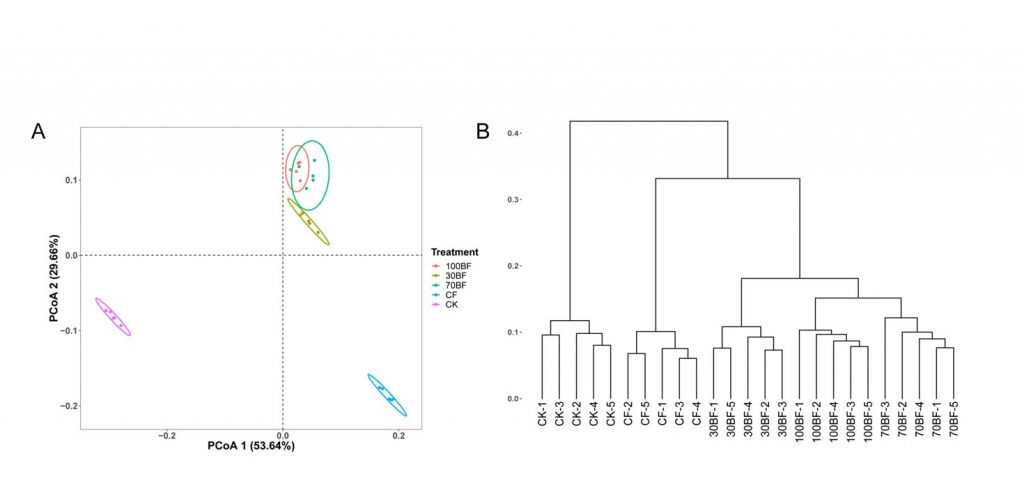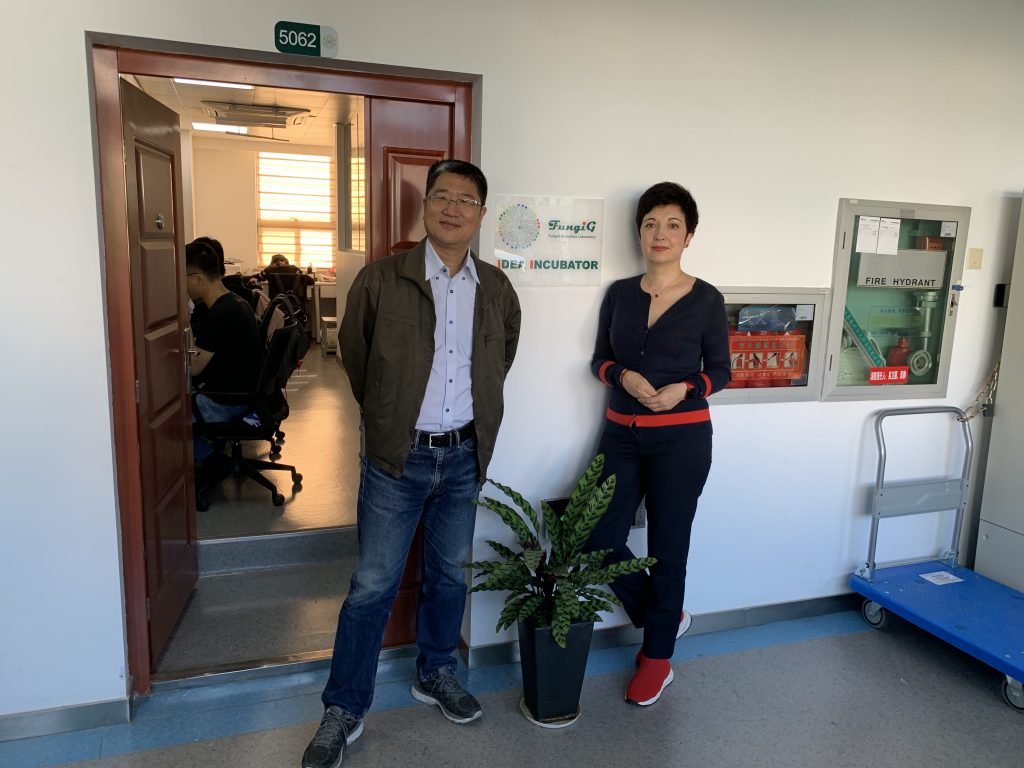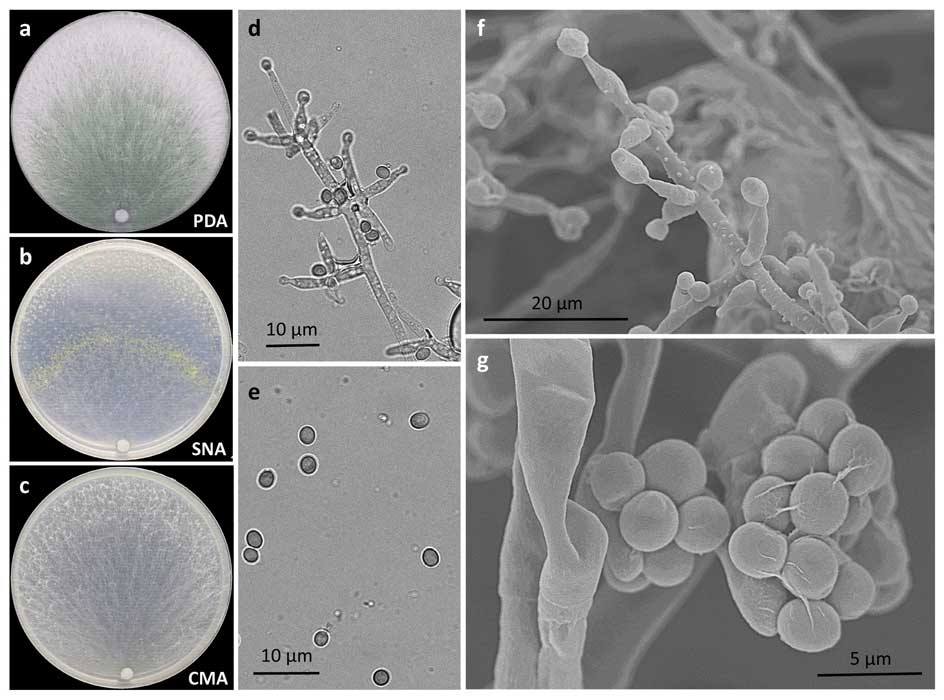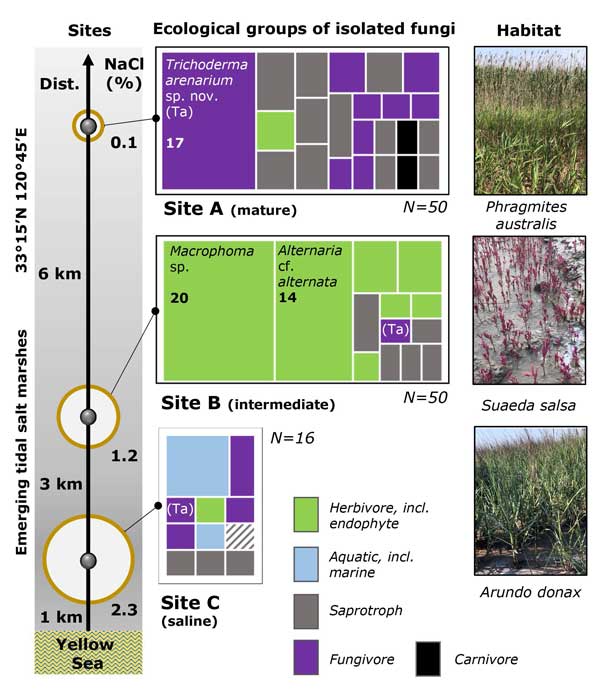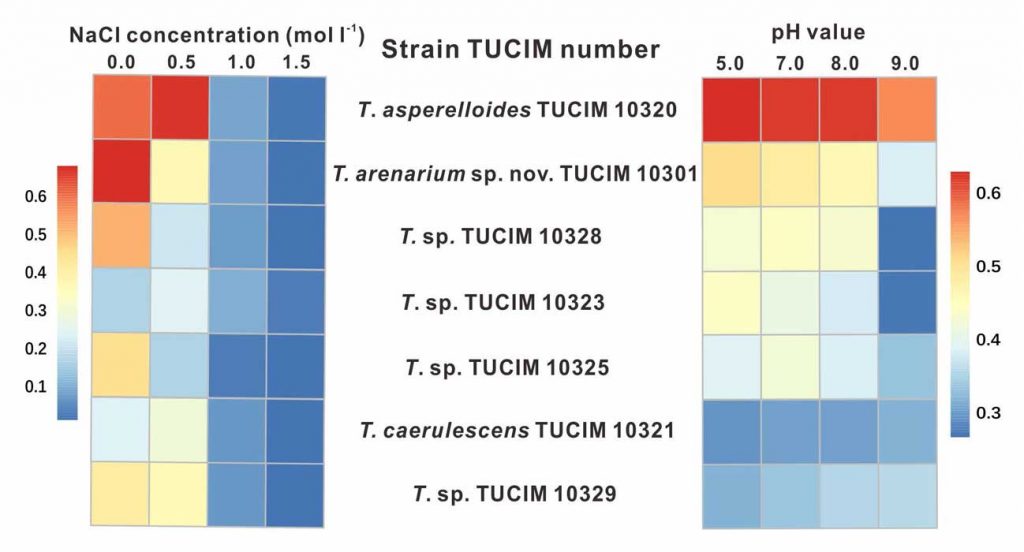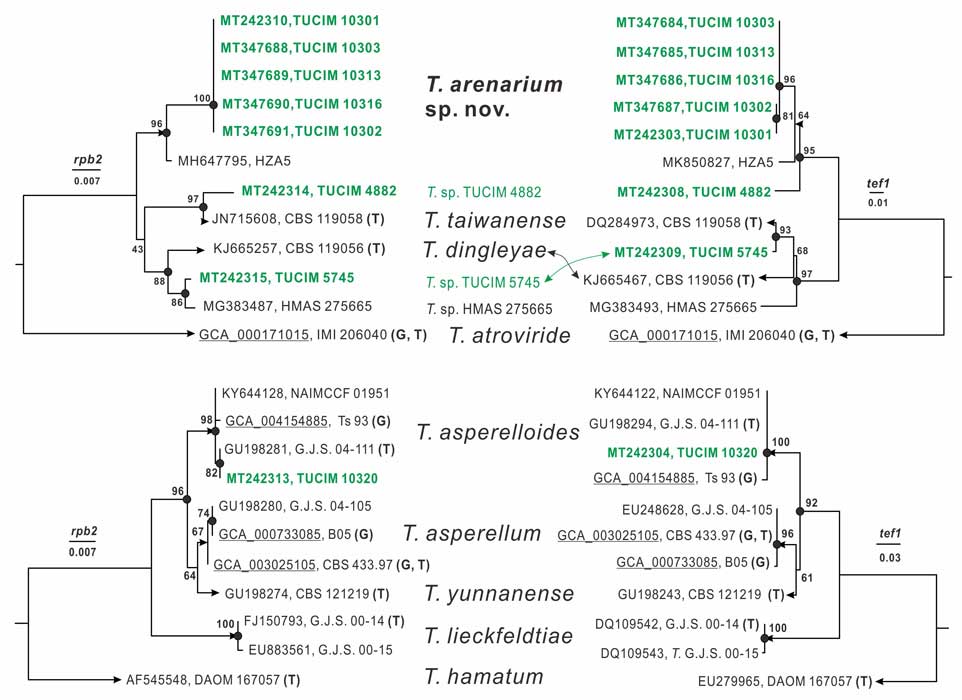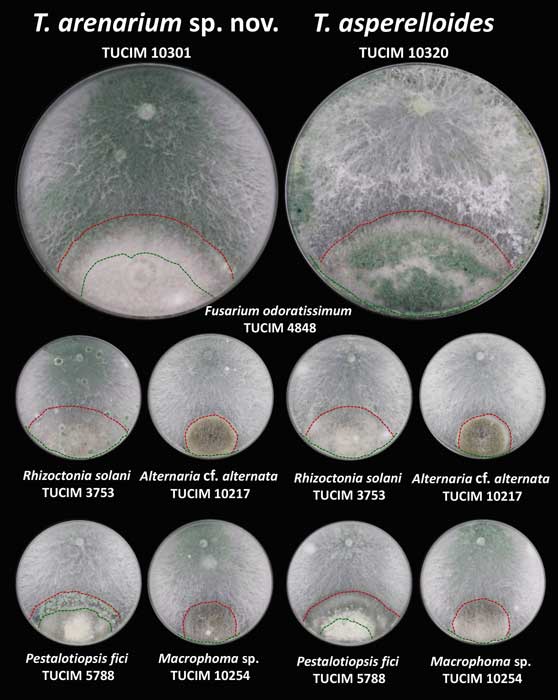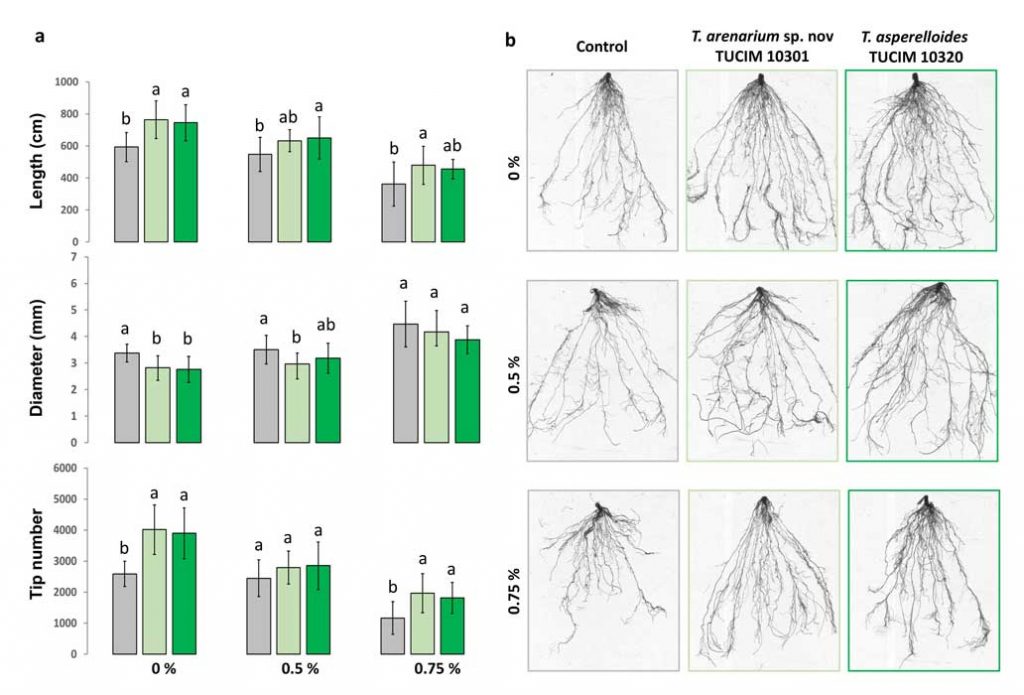Siqi Jiang, a FungiG Ph.D. student researching the green mold disease in mushroom farms caused by Trichoderma. We have recently found a new Trichoderma species that is associated with one of the very common edible mushrooms. As it was my first sampling trip for Trichoderma diversity, I find this discovery fascinating and exciting. I want to explore the fungal ability to degrade petroleum-based synthetic polymers (plastic) in my other research direction. In my opinion, fungi are magical. They have very different morphology and life history compared to other organisms that I studied before. They can help humans and can also be dangerous. Today’s plastic pollution is worrying. Some fungi can deal with plastic. I hope to use enzymes produced by fungi to degrade plastics effectively and alleviate “white pollution”. I think we also do not understand the interactions within fungal communities. For example, the fungal wars between the mycoparasitic Trichoderma and such hosts as mushrooms and plant-pathogenic fungi have remarkable differences even though the basic scenario is the same: the hosts try to defend against Trichoderma invasion while Trichoderma breaks through. My goal is to figure out the molecular mechanisms of these interactions.
My recent publications:
Jiang S, Yu Y, Gao R, Wang H, Zhang J, Li R, Long X, Shen Q, Chen W, & Cai F. 2019. High-throughput absolute quantification sequencing reveals the effect of different fertilizer applications on bacterial communities in a tomato cultivated coastal saline soil. The Science of the total environment, 687, 601–609.
Cai F, Zhao Z, Gao R, Chen P, Ding M, Jiang S, Fu Z, Xu P, Chenthamara K, Shen Q, Bayram Akcapinar G, Druzhinina IS 2021 The pleiotropic functions of Intracellular hydrophobins in aerial hyphae and fungal spores. PLoS Genetics 17(11): e1009924. https://doi.org/10.1371/journal.pgen.1009924
Daly P, Cai F, Kubicek CP, Jiang S, Grujic M, Rahimi MJ, Sheteiwy MS, Giles R, Riaz A, de Vries RP, Bayram Akcapinar G, Wei L, Druzhinina IS 2021 From lignocellulose to plastics: knowledge transfer on the degradation approaches by fungi. Biotechnology Advances, DOI: 10.1016/j.biotechadv.2021.107770
Zhao Z, Cai F, Gao R, Ding M, Jiang S, Chen P J, Pang G, Chenthamara K, Shen Q, Bayram-Akcapinar G, Druzhinina S I. 2021 At least three families of hyphosphere small secreted cysteine-rich proteins can optimize surface properties to a moderately hydrophilic state suitable for fungal attachment. Environmental Microbiology. doi: 10.1111/1462-2920.15413
Ding MY, Chen W, Ma XC, Lv BW, Jiang SQ, Yu YN, Rahimi MJ, Gao RW, Zhao Z, Cai F, Druzhinina IS 2020 Emerging salt marshes as a source of Trichoderma arenarium sp. nov. and other fungal bio effectors for bio saline agriculture. Journal of Applied Microbiology 130: 179–195. doi:10.1111/jam.14751
Gao R, Ding M, Jiang S, Zhao Z, Chenthamara K, Shen Q, Cai F, Druzhinina IS 2020 The Evolutionary and Functional Paradox of Cerato-platanins in Fungi. Applied and Environmental Microbiology 86 (13):e00696-00620. doi:10.1128/AEM.00696-20
Cai F, Gao R, Zhao Z, Ding M, Jiang S, Yagtu C, Zhu H, Zhang J, Ebner T, Mayrhofer-Reinhartshuber M, Kainz P, Chenthamara K, Akcapinar GB, Shen Q, Druzhinina IS 2020 Evolutionary compromises in fungal fitness: hydrophobins can hinder the adverse dispersal of conidiospores and challenge their survival. The ISME Journal 14 (10):2610-2624. doi:10.1038/s41396-020-0709-0
